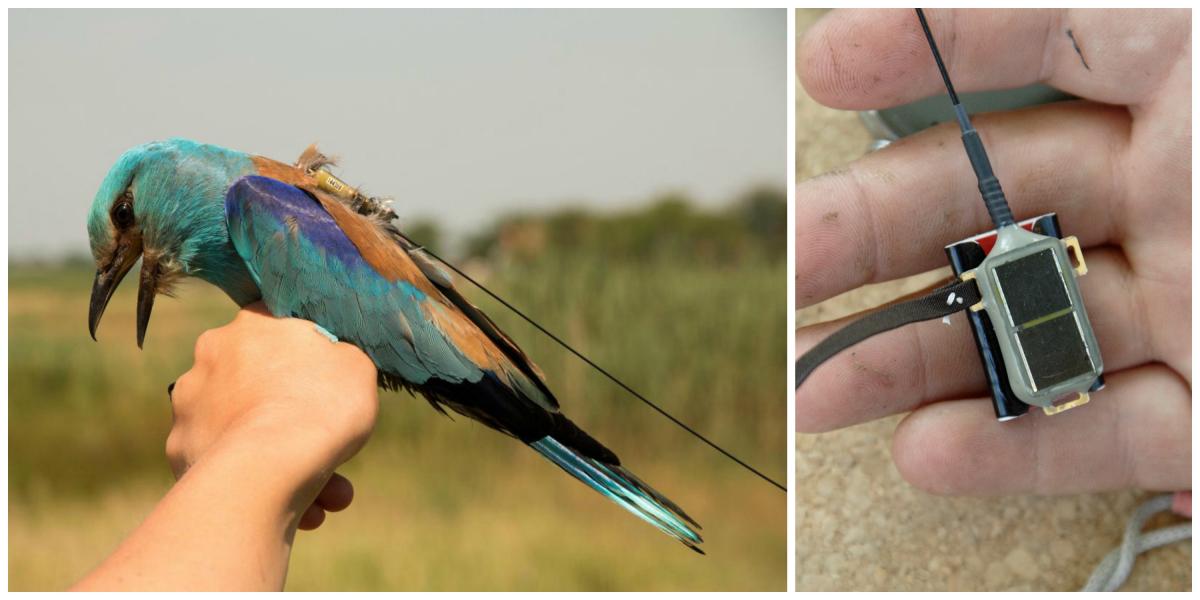Satellite tracking
Satellite tagging and tracking of rollers within the Carpathian Basin started in the summer of 2015, using specific, 5-gram tags by Microwave Telemetry Inc. (USA).
Two out of 4 tags used in 2015 worked only for a short while, thus allowing us to track the birds named “Kacor” and “Levente” only within the breeding season. The other two birds, “Pétör” and “Csele” provided us with a host of useful information throughout their migration.
The map shows the routes of the birds with currently functioning tags. For further information, and other tagged birds visit: http://satellitetracking.eu/
In the autumn of 2016, further 3 tagged rollers set off towards Africa. "Artúr", "Fehérlófia" and "Eleven" can be followed on the interactive map of http://satellitetracking.eu/.
In the summer of 2017 we satellite tagged further 4 Hungarian rollers: "Albert", "Éganya", "Hadnagy", and "Vendel". As part of the project we also tagged 5 birds in Romania this year: "Ágya", "Bolomey", "Bíró", "Kondás", and "Márton". The movements of these birds can be followed on the interactive map of http://satellitetracking.eu/.

The tag only weighs 4.5 grams, that is less than 5% of the body weight. (Photos: Béla Tokody, Zoltán Orbán).
Satellite tracking techniques provide us important data about the migration routes and wintering sites of the birds, as well as their habitat use during the breeding season. This kind of information is essential for the conservation of the species, as threat factors can be mitigated or lessened more effectively when the exact migration routes are pinned down, while stopover- and wintering sites can also be selected as conservation priorities once their exact location is known. Birdlife partner organizations in Bulgaria, Cyprus and Israel have also joined the project in order to protect important areas along the roller migration routes.
The use of satellite tags are necessary as the traditional ringing method didn’t provide enough data on migration. During the period between 1908-2016, 16.666 rollers were ringed in Hungary and only 39 individuals were recaptured / resighted abroad, only about 0.23%. As the map shows below, most of the recapture data points are scattered within Europe, not giving any information about the migration routes.
The map shows the recapture locations of rollers ringed in Hungary (Source: http://www.mme.hu/magyarorszagmadarai/madaradatbazis-corgar).


















